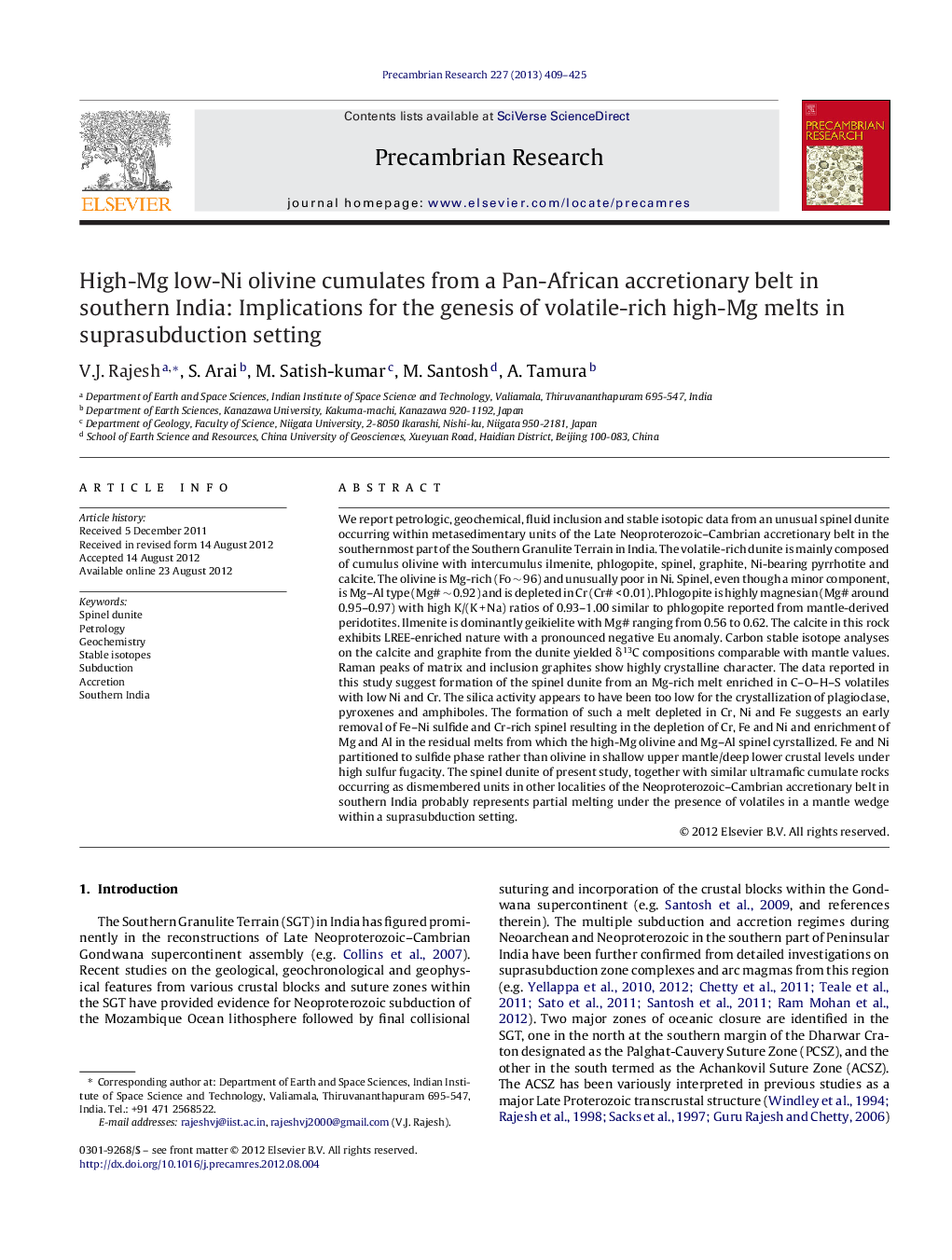| کد مقاله | کد نشریه | سال انتشار | مقاله انگلیسی | نسخه تمام متن |
|---|---|---|---|---|
| 4723412 | 1639647 | 2013 | 17 صفحه PDF | دانلود رایگان |

We report petrologic, geochemical, fluid inclusion and stable isotopic data from an unusual spinel dunite occurring within metasedimentary units of the Late Neoproterozoic–Cambrian accretionary belt in the southernmost part of the Southern Granulite Terrain in India. The volatile-rich dunite is mainly composed of cumulus olivine with intercumulus ilmenite, phlogopite, spinel, graphite, Ni-bearing pyrrhotite and calcite. The olivine is Mg-rich (Fo ∼ 96) and unusually poor in Ni. Spinel, even though a minor component, is Mg–Al type (Mg# ∼ 0.92) and is depleted in Cr (Cr# < 0.01). Phlogopite is highly magnesian (Mg# around 0.95–0.97) with high K/(K + Na) ratios of 0.93–1.00 similar to phlogopite reported from mantle-derived peridotites. Ilmenite is dominantly geikielite with Mg# ranging from 0.56 to 0.62. The calcite in this rock exhibits LREE-enriched nature with a pronounced negative Eu anomaly. Carbon stable isotope analyses on the calcite and graphite from the dunite yielded δ13C compositions comparable with mantle values. Raman peaks of matrix and inclusion graphites show highly crystalline character. The data reported in this study suggest formation of the spinel dunite from an Mg-rich melt enriched in C–O–H–S volatiles with low Ni and Cr. The silica activity appears to have been too low for the crystallization of plagioclase, pyroxenes and amphiboles. The formation of such a melt depleted in Cr, Ni and Fe suggests an early removal of Fe–Ni sulfide and Cr-rich spinel resulting in the depletion of Cr, Fe and Ni and enrichment of Mg and Al in the residual melts from which the high-Mg olivine and Mg–Al spinel cyrstallized. Fe and Ni partitioned to sulfide phase rather than olivine in shallow upper mantle/deep lower crustal levels under high sulfur fugacity. The spinel dunite of present study, together with similar ultramafic cumulate rocks occurring as dismembered units in other localities of the Neoproterozoic–Cambrian accretionary belt in southern India probably represents partial melting under the presence of volatiles in a mantle wedge within a suprasubduction setting.
Figure optionsDownload as PowerPoint slideHighlights
► Unusual volatile rich spinel dunite from a Late Neoproterozoic–Cambrian suture zone in Gondwana.
► The cumulates represent traces of wedge mantle magmas in suprasubduction setting.
► Confirms subduction–accretion–collision tectonics in the southern part of Peninsular India during Gondwana assembly.
Journal: Precambrian Research - Volume 227, April 2013, Pages 409–425